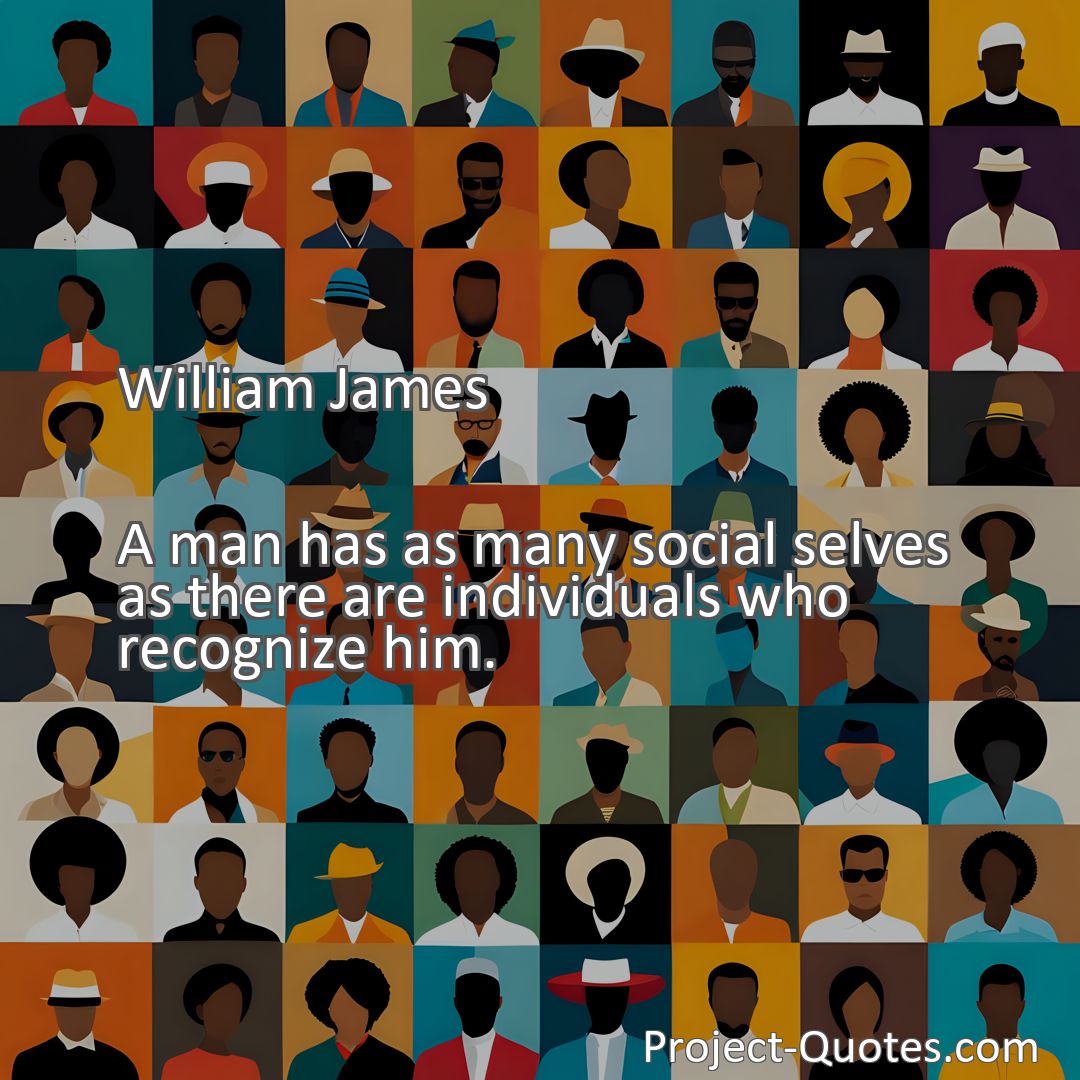William James
Understanding Social Identity Perception: How Others See Us and How It Shapes Our Social Selves Our social identity is not just about who we think we are, but also how others see us. Each person forms their own unique perception of us based on their experiences, biases, and interactions. Our social selves are shaped by these diverse perceptions, making our social identity complex and multifaceted.
Table of Contents
When we think about ourselves, we often focus on our own thoughts, feelings, and beliefs. But have you ever stopped to consider how others perceive you? According to the quote, “A man has as many social selves as there are individuals who recognize him,” our social identity is not just a reflection of who we think we are, but also how others see us.
As human beings, we are deeply social creatures. Our interactions with others shape who we are and how we present ourselves to the world. Each person we come into contact with forms an image of us in their minds, based on their own experiences, perceptions, and biases. These diverse perceptions create a complex web of social selves, as varied and multifaceted as the people who recognize us.
Imagine you are walking into a crowded room for the first time. As you make your way through the crowd, you catch the eyes of different individuals. Some may see you as confident and outgoing, while others may perceive you as shy or reserved. These initial impressions are based on a range of factors, including your appearance, body language, and perhaps even the way you interact with others. In that moment, you are presenting multiple social selves to those around you, revealing different facets of your personality depending on who is observing.
Our social selves are not fixed or set in stone. They change and evolve over time, shaped by our interactions and experiences with others. The way we communicate, dress, and behave in different social contexts can all contribute to the formation of our social identity. For example, you may behave differently around your classmates than you do with your family or close friends. This adaptability is a normal part of being human, as we naturally adjust our behavior to fit the expectations and norms of different social groups.
One fascinating aspect of the quote is the idea that we have as many social selves as there are individuals who recognize us. This suggests that our social identity is not a singular and unified concept but rather fragmented and dispersed among those who know us. Each person we encounter forms their own unique perception of us, based on their individual perspectives and interactions. This means that we may be seen and known in countless different ways, depending on the diverse range of people in our lives.
Consider your own social selves. Think about the different roles you play in your life – as a student, a sibling, a friend, and so on. Now imagine how you may be perceived by your classmates, your siblings, and your friends. Can you identify any differences or similarities in how they see you? This exercise can help you understand the intricate nature of social identity and how it is shaped by the perceptions of others.
It is important to acknowledge that our social selves are not entirely within our control. While we can choose how we present ourselves and engage with others, we cannot control how they perceive us. Their own biases, beliefs, and experiences influence their interpretation of who we are. This can be both liberating and challenging. On one hand, it means that we have the power to shape our social identity through our actions and behavior. On the other hand, it means that we must navigate the diverse perceptions of others, which may not always align with our own self-perception.
In today’s interconnected world, our social selves are not only shaped by face-to-face interactions but also by our online presence. Social media platforms allow us to present curated versions of ourselves, showcasing specific aspects of our lives to our online communities. This digital landscape introduces new complexities to our social identity, as we are not only recognized by those we interact with directly but also by those who view our online profiles. Our online personas may differ from our offline selves, further adding to the multitude of social selves that exist.
Moreover, our social selves are not just a simple collection of how others perceive us. They also reflect the various roles and identities we take on in different social contexts. For example, a person may be a student, an athlete, and a musician, each of which comes with its own set of expectations and behaviors. These different roles contribute to the complex web of social selves, as we navigate between various contexts and adapt our behavior accordingly.
In conclusion, the quote “A man has as many social selves as there are individuals who recognize him” highlights the intricate and multifaceted nature of our social identity. As individuals, we are not defined by a single, fixed self, but rather by the diverse perceptions and interpretations of those who know us. Our social selves are shaped by our interactions, experiences, and the roles we play in different social contexts. This understanding allows us to appreciate the complexity of human identity and the importance of empathy and understanding in our interactions with others.
I hope this quote inspired image brings you hope and peace. Share it with someone who needs it today!


